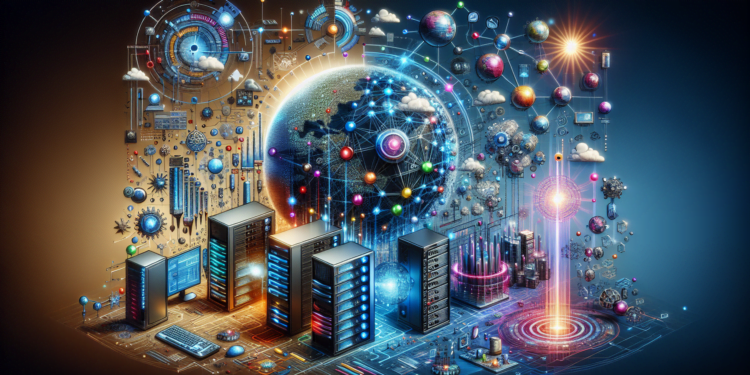In recent years, Distributed Artificial Intelligence (DAI) has emerged as a notable branch of research and development within the broader field of Artificial Intelligence (AI). It addresses the intersection of distributed systems and AI, focusing on how multiple AI entities can cooperate and coordinate actions towards a common goal. With its growing relevance, DAI is transforming industries and scientific practices, making it essential for professionals to stay up to date with advances and key concepts. This article delves into DAI, exploring definitions, algorithms, and practical cases to offer the specialized audience a comprehensive perspective of the current state of this discipline.
Discussion on Distributed AI
Definition and Importance of DAI
Distributed Artificial Intelligence (DAI) is a subfield of AI that focuses on the design, development, and analysis of intelligent systems made up of multiple independent yet interactive agents. These agents can be physical, such as robots, or virtual, like software capable of reasoning and learning. The ability to work together, sharing information and resources, is what distinguishes DAI from more traditional AI approaches.
This distributed approach offers significant advantages such as scalability, redundancy for increased reliability, and the ability to solve complex problems that would be intractable or inefficient for a single agent. With its application, advancements are observed in fields as diverse as logistics, transportation, energy systems, and the contextualization of virtual personal assistants to enhance user experience.
Agents and Multiagent Systems
Fundamental to DAI are the concepts of agents and multiagent systems. An agent is an autonomous entity with the capability to perceive its environment and act upon it to achieve its goals. In DAI, these agents often contain a form of intelligence that allows them to reason and learn from their experiences.
A multiagent system (MAS) is a group of agents that interact and possibly cooperate to perform tasks. These systems are designed with the intention of enabling interactions that result in the emergence of intelligent behaviors at the system level, beyond the capabilities of individual agents.
Key Technologies and Algorithms in DAI
- Role-Based Agent Systems: These systems assign specific roles to agents that define their behavior and permitted interactions with other agents, facilitating organization and collaboration.
- Negotiation and Coordination between Agents: By using elaborate communication protocols and negotiation techniques, agents can make decisions and synchronize actions.
- Distributed Neural Networks: An extension of traditional neural networks where processing is distributed among several nodes or agents, which can speed up computation and allow for greater adaptability to large and complex data environments.
- Multiagent Reinforcement Learning: An extension of reinforcement learning where several agents learn simultaneously. This can lead to the emergence of cooperative or competitive strategies, depending on the scenario.
Emerging Practical Applications
The applications of DAI are broad and transformative. For example, in urban traffic control, DAI systems can optimize traffic lights in response to real-time traffic patterns. In logistics and supply chain, DAI helps to synchronize the delivery and storage of products. And in the realm of personal services, distributed AI agents can analyze large amounts of personal data to offer hyper-personalized recommendations.
Current and Future Challenges
Despite its advances, DAI faces significant challenges. The interoperability between different agents and data privacy and security issues are of particular concern. Additionally, there is the problem of ensuring the reliability and predictability of systems in real-world environments.
The most promising aspect of DAI is its potential to foster human-machine collaboration. In this context, DAI is expected to advance the agents’ ability to understand, anticipate, and enhance human needs and desires.
Conclusions
Distributed Artificial Intelligence is an exciting frontier in the field of AI, with the potential to redesign industrial and scientific landscapes. As technology progresses and algorithms are refined, the capacity of multiagent systems to perform complex tasks improves exponentially. With each advance, professionals must be prepared to integrate new knowledge and practical applications into their work, benefiting from a field that is literally distributing intelligence across our interactions with the digital and physical world.
A deep understanding of DAI not only extends the technological capabilities of organizations but also raises ethical and practical issues that will require our ongoing attention. Future developments in this field will undoubtedly bring unprecedented innovations and challenges, and it is our job as a specialized community to ensure that they are guided by wisdom as much as by intelligence.






















